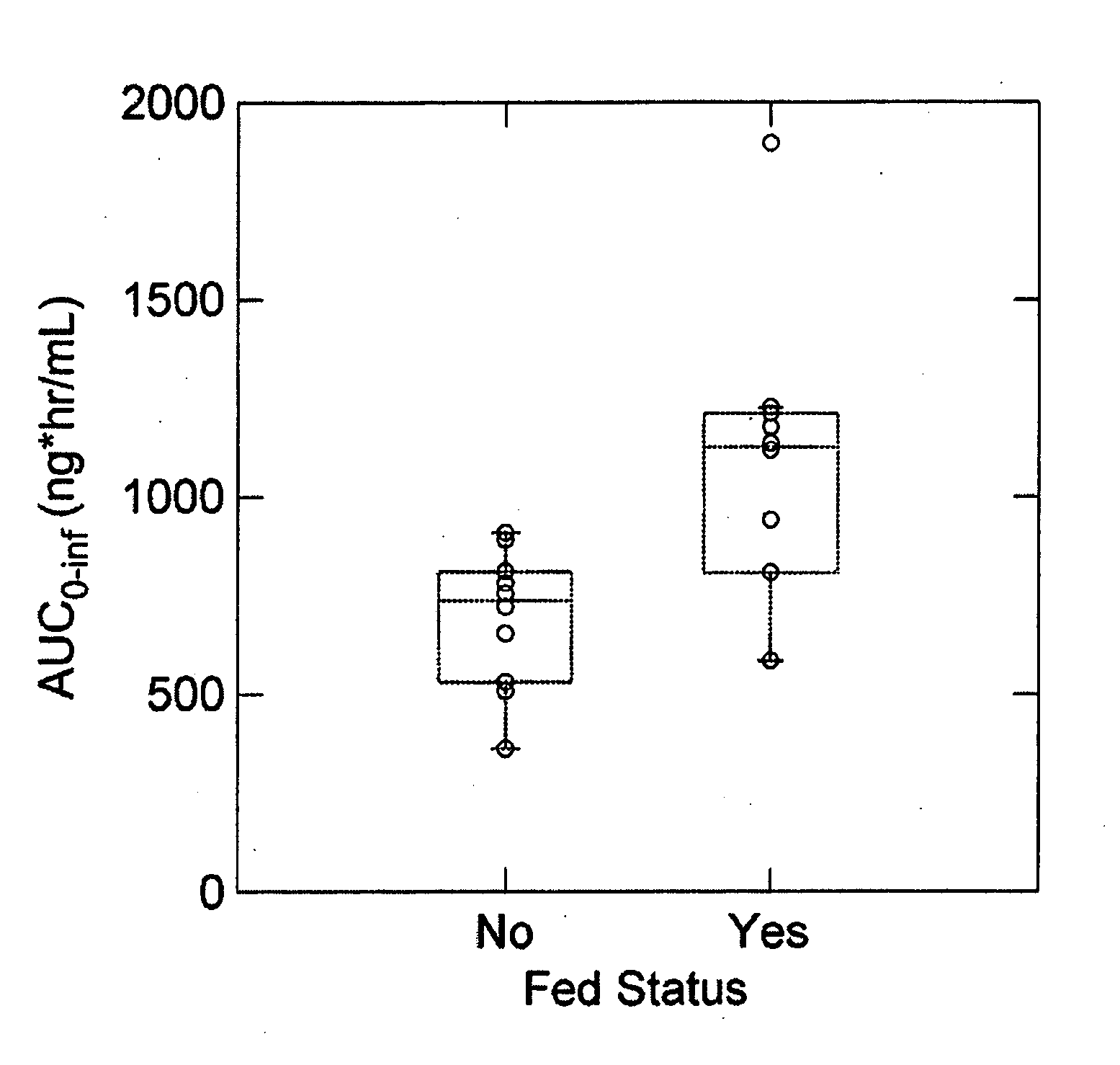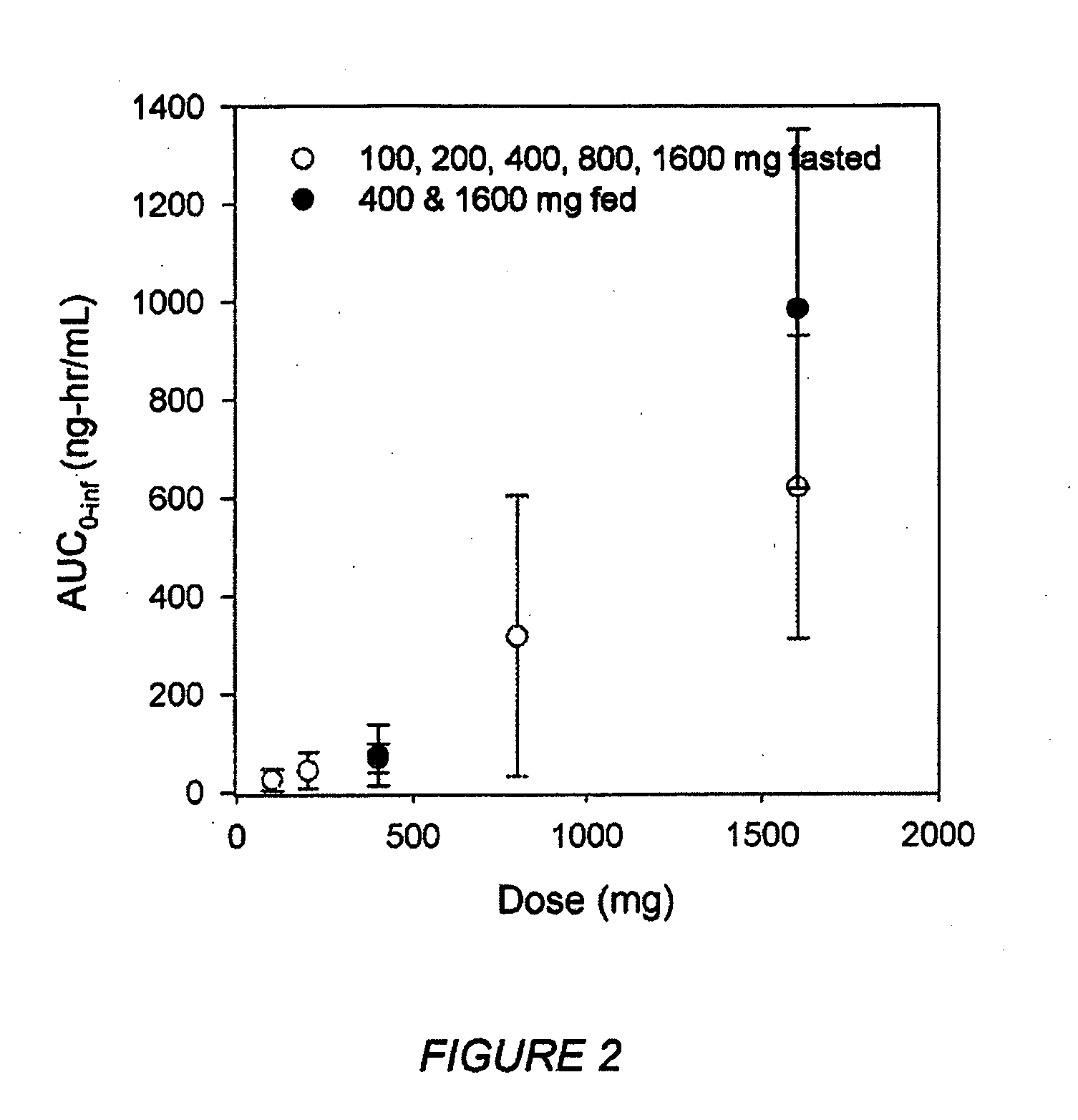Novel macrocyclic inhibitors of hepatitis c virus replication
a technology of hepatitis c virus and macrocyclic inhibitors, which is applied in the direction of biocide, drug composition, peptide/protein ingredients, etc., can solve the problems of 40% to 50% of patients who fail therapy, non-responders or relapsers, and patients currently have no effective therapeutic alternative, etc., to achieve the effect of increasing liver function
- Summary
- Abstract
- Description
- Claims
- Application Information
AI Technical Summary
Benefits of technology
Problems solved by technology
Method used
Image
Examples
example 1
[0534]
[0535](2R,6S,13aS,14aR,16aS,Z)-6-(tert-butoxycarbonylamino)-5,16-dioxo-14a-(phenoxycarbamoyl)-1,2,3,5,6,7,8,9,10,11,13a,14,14a,15,16,16a-hexadecahydrocyclopropa[e]pyrrolo[1,2-a][1,4]diazacyclopentadecin-2-yl 4-fluoroisoindoline-2-carboxylate, Compound 101, was prepared as shown in the following scheme:
[0536]Intermediate 1 (0.050 g, 0.078 mmol), 1,1′-carbonyldiimidazole (0.0181 g, 0.111 mmol) in toluene was stirred at 65° C. for 2 hours. 1,8-diazabicyclo[5.4.0]undec-7-ene (0.036 mL, 0.24 mmol) and O-phenylhydroxylamine hydrochloride (0.017 g, 0.12 mmol) were added and the reaction was stirred at 65° C. for 18 hours then water (5 mL) was added and the reaction was acidified with saturated KHSO4 until pH reached 3-4. The mixture was extracted with EtOAc (20 mL), washed with brine and dried over sodium sulfate. After removal of solvent, the residue was purified by chromatography to provide (2R,6S,13aS,14aR,16aS,Z)-6-(tert-butoxycarbonylamino)-5,16-dioxo-14a-(phenoxycarbamoyl)-1,2,...
example 2
[0537]
[0538](2R,6S,13aS,14aR,16aS,Z)-6-(tert-butoxycarbonylamino)-14a-(cyclopropylmethoxycarbamoyl)-5,16-dioxo-1,2,3,5,6,7,8,9,10,11,13a,14,14a,15,16,16a-hexadecahydrocyclopropa[e]pyrrolo[1,2-a][1,4]diazacyclopentadecin-2-yl 4-fluoroisoindoline-2-carboxylate, Compound 102, was prepared as shown in the following scheme:
[0539]Intermediate 1 (0.075 g, 0.119 mmol), 0-(cyclopropylmethyl)hydroxylamine hydrochloride (0.016 g, 0.18 mmol) and 2-(1H-7-azabenzotriazol-1-yl)-1,1,3,3-tetramethyl uronium hexafluorophosphate (0.0454 g, 0.119 mmol) in DMF (3 mL) was added diisopropylethylamine (d=0.742 g / mL) (0.052 mL, 0.30 mmol) at room temperature. The reaction was stirred at room temperature for 2 hours the H2O (5 mL) was added and acidified with saturated KHSO4 until pH=3˜4. The mixture was extracted with ethyl ether (20 mL), washed with brine and dried over sodium sulfate. After removal of solvent, the residue was purified by chromatography to give (2R,6S,13aS,14aR,16aS,Z)-6-(tert-butoxycarbon...
example 3
[0540]
[0541](2R,6S,13aS,14aR,16aS,Z)-14a-(tert-butoxycarbamoyl)-6-(tert-butoxycarbonylamino)-5,16-dioxo-1,2,3,5,6,7,8,9,10,11,13a,14,14a,15,16,16a-hexadecahydrocyclopropa[e]pyrrolo[1,2-a][1,4]diazacyclopentadecin-2-yl 4-fluoroisoindoline-2-carboxylate, Compound 103, was prepared in a similar fashion as described for Compound 102 in Example 2, except that O-tert-butyl-hydroxylamine hydrochloride was used in lieu of O-(cyclopropylmethyl)hydroxylamine hydrochloride. MS: Calcd.: 699.4; Found: [M−H]+ 698.4. 1H NMR (400 MHz, DMSO-d6). 10.03 (s, 1H), 8.87 & 8.84 (s, 1H), 7.37 (m, 1H), 7.10-7.20 (m, 3H), 5.49 (m, 1H), 5.29 (s, 1H), 5.29 (m, 1H), 4.67 (s, 4H), 4.46 (m, 1H), 4.30 (m, 1H), 3.92 (m, 1H), 3.71 (m, 1H), 2.62 (m, 1H), 2.27 (m, 2H), 2.09 (m, 1H), 1.04-1.68 (m, 29H).
PUM
| Property | Measurement | Unit |
|---|---|---|
| Time | aaaaa | aaaaa |
| Time | aaaaa | aaaaa |
| Time | aaaaa | aaaaa |
Abstract
Description
Claims
Application Information
 Login to View More
Login to View More - R&D
- Intellectual Property
- Life Sciences
- Materials
- Tech Scout
- Unparalleled Data Quality
- Higher Quality Content
- 60% Fewer Hallucinations
Browse by: Latest US Patents, China's latest patents, Technical Efficacy Thesaurus, Application Domain, Technology Topic, Popular Technical Reports.
© 2025 PatSnap. All rights reserved.Legal|Privacy policy|Modern Slavery Act Transparency Statement|Sitemap|About US| Contact US: help@patsnap.com



